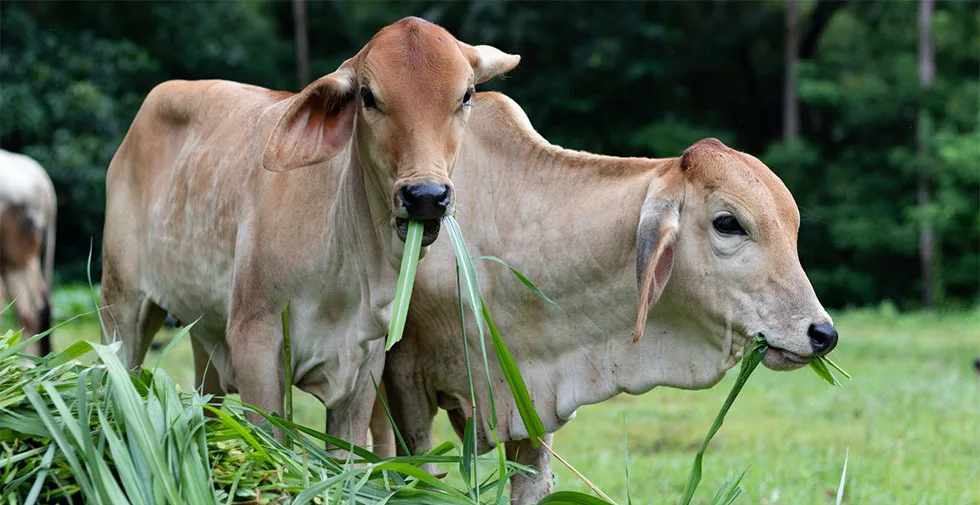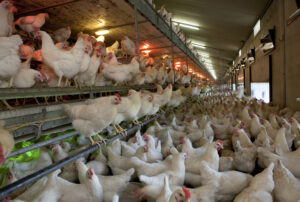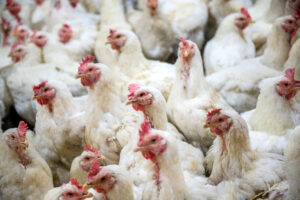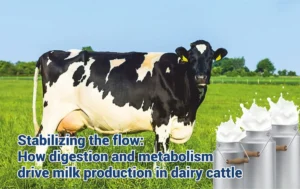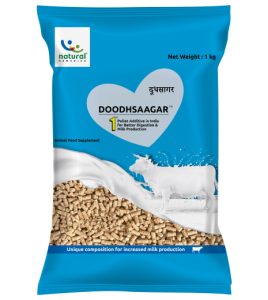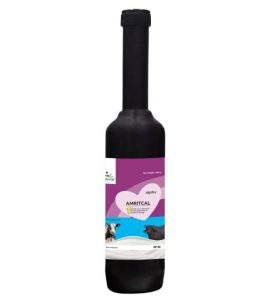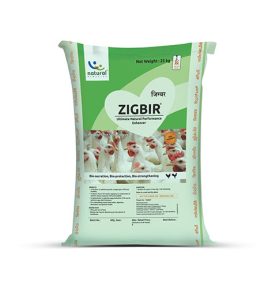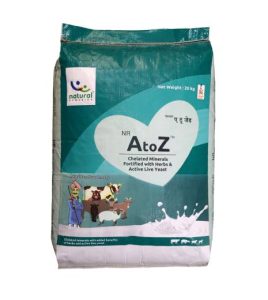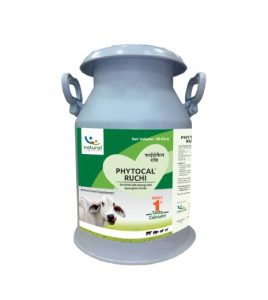Chronic indigestion, or vagal indigestion in cattle is a condition where the stomach compartments fail to move food properly, disrupting digestion and its flow through the stomach. It is a condition in cattle, involving either functional or mechanical disturbances in the stomach, leading to symptoms like poor appetite, weight loss, dehydration, and reduced fecal output. Ruminal stasis, or atony, is a condition where the rumen lacks the necessary tone or contractions for digestion. Grain overload presents a severe risk by causing lactic acidosis, which can be deadly within 24 to 72 hours. Additionally, foreign body syndrome occurs when animals consume inanimate objects to meet their energy requirements, which can further complicate their digestive health.
Causes of Vagal Indigestion in Cattle
Vagal indigestion can be caused by several factors based on the severity level:
Vagal Nerve Damage
Vagal nerve damage in cattle is an injury or dysfunction of the vagus nerve, which controls the movement of the stomach compartments. This damage disrupts normal digestion and can lead to conditions like vagal indigestion, causing issues such as bloating, reduced appetite, and poor feed passage.
Vagal indigestion in cattle can stem from damage to the vagal nerve. This nerve damage may occur due to injuries in the throat area or as a result of infections, abscesses (pus-filled pockets), or inflammation in the chest or front part of the abdomen. When the vagus nerve is impaired, it disrupts the nerve signals that control stomach motility, leading to digestive issues.
Mechanical Inhibition of Stomach Motility
A reduction in stomach movement can also lead to vagal indigestion in cattle, often due to mechanical restrictions around the stomach area. In cases where scar tissue (adhesions) forms on or near the stomach, typically as a result of previous inflammation or infection, the stomach’s ability to contract properly is hindered, impairing its motility.
Impaction with Dry, Coarse Feed
Feeding cattle with an excess of dry, coarse feed can lead to impaction, a condition where food becomes difficult to pass through the stomach. The dense, rough feed can create blockages that prevent food from moving normally, ultimately leading to vagal indigestion in cattle.
Obstructions in Pregnant Cows
Pregnant cows are especially susceptible to obstructions that can cause vagal indigestion. During pregnancy, pressure on the stomach and other digestive organs may lead to blockages, interfering with normal stomach function and digestion.
Traumatic Reticuloperitonitis
Also known as “hardware disease,” traumatic reticuloperitonitis occurs when cattle accidentally ingest sharp objects, such as metal or wire, which can pierce the stomach wall. This condition can disrupt the vagal nerve and cause digestive issues, often leading to vagal indigestion in cows.
Periesophagitis
Periesophagitis is an inflammation around the esophagus, or food pipe, which can lead to vagal indigestion in cows by restricting the movement of food through the digestive tract. This inflammation disrupts the normal function of the esophagus, resulting in difficulties in food passage.
Paraesophageal Abscess
An infection near the esophagus, known as a paraesophageal abscess, can affect the vagus nerve, which controls stomach movement. When the vagus nerve is compromised due to this abscess, the stomach’s ability to process food properly is hindered, causing vagal indigestion in cattle.
Megaesophagus
It is a condition where the esophagus becomes enlarged and loses its normal tone. This can lead to difficulty in food and gas movement through the stomach, leading to symptoms associated with vagal indigestion in cows.
Enlargement of Mediastinal Lymph Nodes
The mediastinal lymph nodes located in the chest area can sometimes enlarge and press against the vagus nerve. When this nerve pressure occurs, it can impede the stomach’s motility, resulting in vagal indigestion in cattle and related digestive issues.
Chronic Pneumonia
Cattle suffering from chronic pneumonia may also experience vagal indigestion due to the effect of respiratory issues on the nerves controlling the stomach. This respiratory condition can indirectly impact the digestive process by altering nerve function.
Abomasal Volvulus
This is a condition in which part of the stomach twists, obstructing the passage of food and gas. This twisting can lead to significant digestive disruptions, including vagal indigestion, due to the inability of food and gases to move normally through the stomach.
What are the signs of vagal indigestion in cows?
Signs of vagal indigestion in cows include a noticeably swollen abdomen, weight loss, and poor appetite, which often lead to reduced fecal output and dehydration. Affected cows may also exhibit bradycardia, with a heartbeat of 60 beats per minute or less. Additionally, there is typically a drop in milk production, and the cows’ coats may become dull and rough, reflecting their overall decline in health.
What are the treatment options for vagal indigestion in cows?
Vagal indigestion in cattle treatment depends on the type and severity of the condition.
Treatment for Type I vagal indigestion, also called free gas bloat, focuses on relieving trapped gas and managing the underlying causes. This often involves passing a stomach tube to release the gas or surgically creating a rumen fistula for chronic cases. If the condition is caused by infections like pneumonia or chest inflammation, antibiotics are administered.
Early cases of Type II vagus indigestion are managed with supportive care, such as administering fluids and electrolytes, rumen cathartics, and subcutaneous injections of calcium boro gluconate. Additionally, providing ample access to water and encouraging exercise can aid in recovery.
Type III vagal indigestion in cows also known as “pyloric output failure,” focuses on addressing the primary causes of abomasal emptying failure, such as impactions, displacements, or obstructions. It is treated with intravenous fluid administration to correct abnormalities like hypokalemia, hypochloremia, and metabolic alkalosis.
However, surgery may be necessary in advanced cases to alleviate the condition. Type IV vagus indigestion is treated with fluids, electrolytes, and calcium, and in some cases, therapeutic abortion may be required to improve the cow’s condition.
Other forms of vagal indigestion and related conditions require different interventions. Traumatic reticuloperitonitis, often caused by foreign objects, is treated with antimicrobials and a rumen magnet to capture metallic items. In severe cases, surgical removal of the foreign body may be necessary.
In cases where underlying diseases contribute to vagal indigestion in cows, procedures like rumenotomy, rumen lavage, and lancing or draining of abscesses in the reticulum and liver are used. Late-gestation cattle may also benefit from the induction of parturition, while some cases of chronic indigestion may require a permanent rumen cannula for long-term management.
In conclusion, recognizing the signs of vagal indigestion in cattle early on is crucial for effective treatment and maintaining herd health. From symptoms like bloating and loss of appetite to behavioral changes, these indicators help cattle farmers take timely action. With a range of treatment options, managing these issues can ensure ruminants stay healthy and productive. By prioritizing digestive health, these farmers support not only the well-being of their animals but also the sustainability of their farming operations, leading to better yields and a more resilient herd.
Related Blogs:










